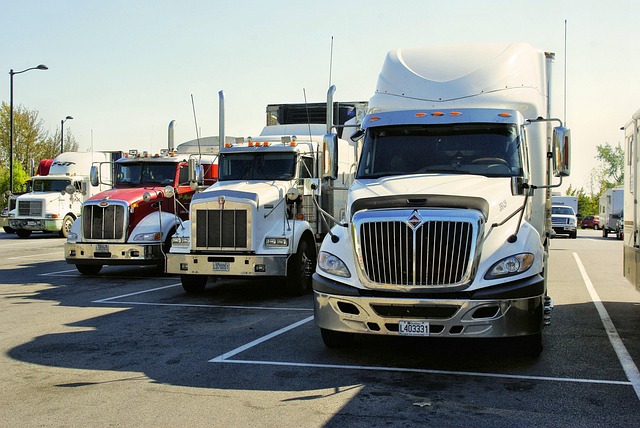Learn how to register your car in California with our step-by-step guide. Before you begin, understand the requirements for car registration in this state and gather all necessary documents. Next, perform a DMV vehicle identification number (VIN) verification using official tools to ensure a smooth process. Once ready, complete the car registration application, pay the required fees, and receive your registration papers. Utilize our tips to make this task efficient, including leveraging the dmv vin verifier for accurate data.
- Understand the Requirements for Car Registration in California
- Gather Necessary Documents for Car Registration
- Perform a DMV Vehicle Identification Number (VIN) Verification
- Complete the Car Registration Application Process
- Pay the Required Fees and Receive Your Registration Papers
Understand the Requirements for Car Registration in California

Before you begin the registration process, it’s crucial to understand the requirements for car registration in California. The California Department of Motor Vehicles (DMV) mandates several key steps, including obtaining a Vehicle Identification Number (VIN) verification. This step ensures that your vehicle meets safety and pollution standards. A reliable VIN verifier, often provided by authorized third-party services, plays a vital role here.
To simplify the process, consider opting for a mobile VIN inspection or verification service. These services allow you to complete this requirement conveniently from your location. By using advanced technology, these mobile vin inspections ensure accuracy and save you time, making it easier to navigate the car registration process in California.
Gather Necessary Documents for Car Registration

Before registering your car in California, make sure to gather all the essential documents. The California Department of Motor Vehicles (DMV) requires specific paperwork for a successful registration process. One crucial document is the Vehicle Identification Number (VIN) verifier, which can be obtained through a mobile vin verification service. This service allows you to securely and conveniently conduct a VIN inspection from the comfort of your home or even while on the go.
Additionally, you’ll need proof of ownership, typically a vehicle title, along with any applicable sales tax and registration fees. An up-to-date insurance card is also mandatory. By ensuring you have these documents ready, you’re well on your way to a smooth car registration experience at your local DMV office or through their online services.
Perform a DMV Vehicle Identification Number (VIN) Verification

Before you begin the registration process, it’s crucial to ensure your vehicle meets all California requirements. One essential step is to perform a DMV Vehicle Identification Number (VIN) verification. This process involves using a reliable dmv vin verifier to cross-reference your vehicle’s unique VIN with the Department of Motor Vehicles’ records. By doing so, you can confirm that the car is not only genuine but also meets all safety and emissions standards set by the state.
A mobile vin verification or vin inspection using an app or online tool can simplify this task. Many services allow you to enter your VIN and instantly receive a report detailing the vehicle’s history, including any previous owners, accidents, or outstanding issues. This information is vital in ensuring a smooth registration process and preventing potential problems down the line.
Complete the Car Registration Application Process

To complete the car registration application process in California, you’ll need to gather essential documents and fill out the necessary forms. Start by visiting your local DMV office or using their online services for a seamless digital experience. The first step involves verifying your vehicle’s unique identifier, known as the Vehicle Identification Number (VIN). Utilize a trusted DMV VIN verifier or mobile VIN inspection tool to ensure the accuracy of this critical piece of information.
Once your VIN is confirmed, proceed with completing the registration application. Provide details about your car, including make, model, year, and color. Additionally, you’ll need to present valid identification, proof of insurance, and any required fees. The process may differ slightly depending on whether you’re registering a new or used vehicle. Always double-check the specific requirements with your local DMV or consult their website for up-to-date information.
Pay the Required Fees and Receive Your Registration Papers

After completing your car’s purchase and ensuring all necessary paperwork is in order, it’s time to take care of registration. To do this, you’ll need to visit a California Department of Motor Vehicles (DMV) office or use their online services. One crucial step before registration is paying the required fees. These fees vary based on factors like your vehicle type and age, but they typically include costs for registration, emissions testing, and title transfer if applicable.
Once you’ve paid the fees, you’ll receive your registration papers, also known as a Certificate of Registration or “reg.” For added convenience, many DMV locations offer mobile vin inspection and verification services using a specialized tool like a mobile vin verifier. This allows you to complete the registration process promptly while ensuring your vehicle’s history is accurately checked through its unique vehicle identification number (VIN).
Registering a car in California is a straightforward process that requires understanding specific criteria, gathering essential documents, and completing a series of steps. By following these guidelines and utilizing a DMV VIN verifier for accurate identification, you can efficiently navigate the registration process. Remember to keep your registration papers secure for future reference and compliance with state regulations.
